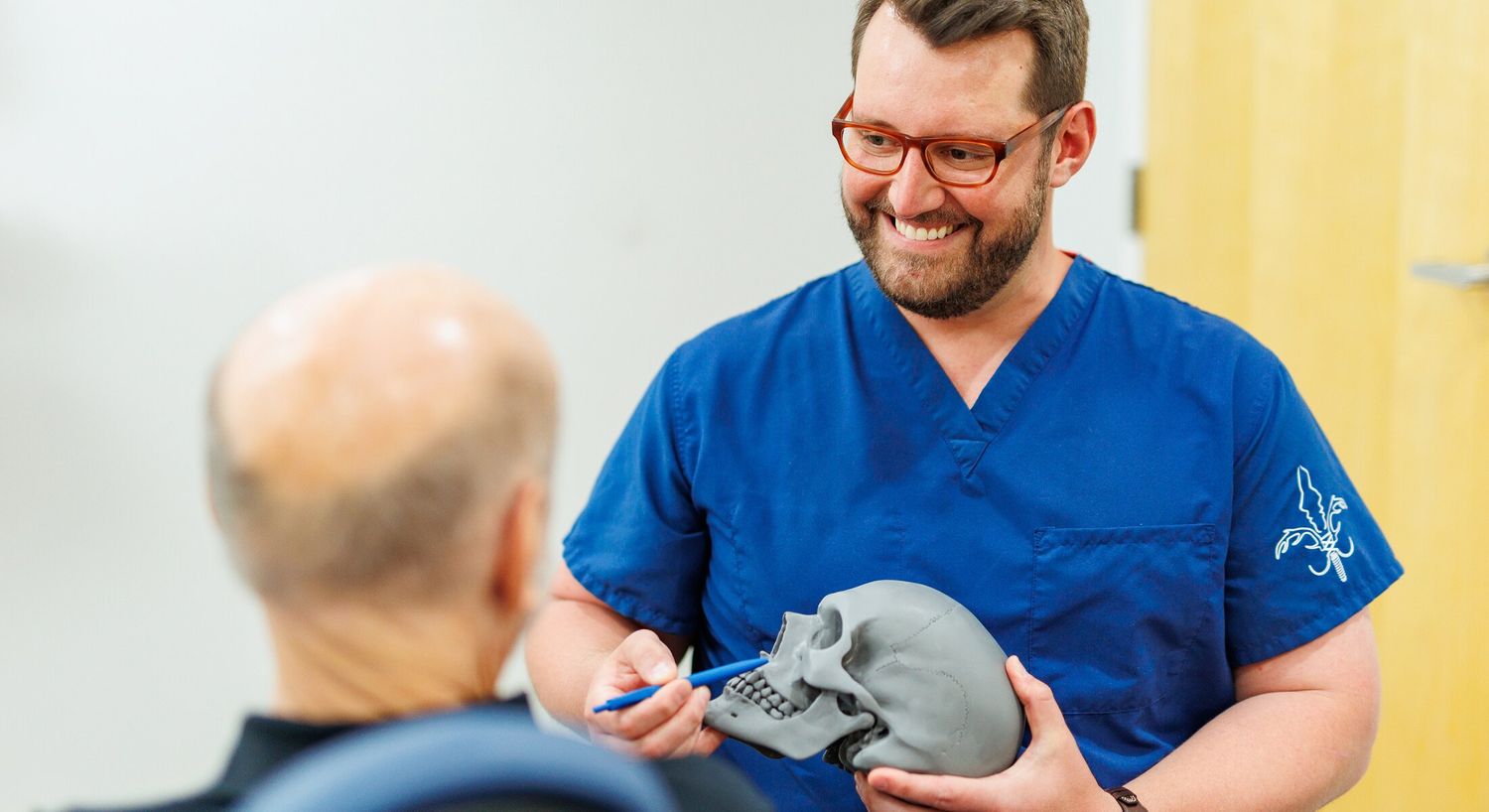
Facial Trauma Treatment

Traumatic injuries to the face can impact not just your appearance but also essential functions like eating, speaking, and breathing. At The OMS Center of South Louisiana, Dr. Joshua S. Brandner, DDS, MD, provides specialized care for patients suffering from facial trauma. With years of surgical expertise and a commitment to compassionate, personalized care, Dr. Brandner ensures functional and aesthetic outcomes are prioritized for his patients.
Whether you’ve experienced a car accident, sports injury, or workplace mishap, we offer advanced treatment options to restore your health and confidence.

When The Unexpected Happens
Facial trauma refers to injuries that affect the teeth, jaw, or facial bones. Such injuries can result from a variety of incidents, including:
Facial trauma often includes damage to teeth, soft tissue, or the bones that define the structure of the face. At The OMS Center of South Louisiana, we treat all forms of facial injuries, ensuring a smooth recovery and lasting results.

Dr. Brandner and his team specialize in diagnosing and treating a range of facial trauma conditions, including:
No matter the severity of your injury, seeking care promptly can prevent further complications and support a faster recovery.

Comprehensive Attention
Dr. Brandner uses a thorough diagnostic process to evaluate facial trauma and recommend appropriate treatments. Diagnosis may include:
By combining these tools, Dr. Brandner ensures a precise diagnosis and tailored treatment plan for each patient.
Facial trauma treatment focuses on stabilizing the injury, restoring function, and preserving aesthetics. The treatment approach will depend on factors like the severity, location, and nature of the trauma. Common treatments include:
Our goal is to ensure fractures heal effectively while minimizing discomfort and long-term impact on your facial structure.
For severe injuries, surgical intervention may be required to ensure proper healing. Surgery often involves stabilizing fractures with screws and plates to realign bones and support proper recovery. This technique promotes effective healing, preserves facial aesthetics, and avoids complications.
Most patients experience significant improvement within weeks, with long-term results restoring both function and confidence.
Facial trauma recovery timelines vary based on the severity of the trauma and the treatment provided. During your recovery, our team will guide you with personalized aftercare instructions to ensure optimal healing.

Keep the tooth moist in milk or saline solution and seek care immediately.
Symptoms like pain when chewing, facial swelling, or misaligned teeth may indicate a fracture.
Surgery is often necessary for severe fractures to realign bones and ensure proper healing.
Lacerations are carefully sutured to minimize scarring and promote healing.
Untreated injuries can lead to chronic pain, misalignment, or permanent changes in appearance.
Most procedures are performed on an outpatient basis, allowing you to recover at home.
No, some symptoms like numbness or uneven facial feeling may indicate underlying damage.
Immediate treatment is recommended to prevent complications and ensure effective healing.